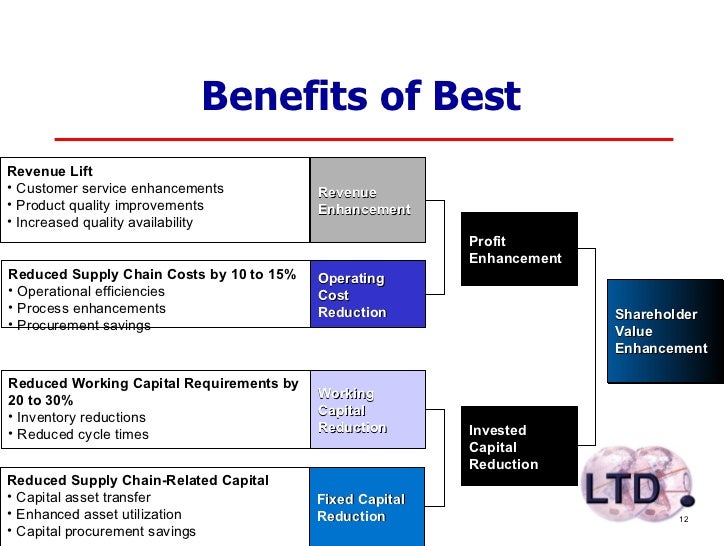
In today's business landscape, organizations often rely on suppliers such as technology vendors, suppliers of raw materials, shared public infrastructure, and other public services. While this approach can ensure responsiveness to issues, it often also is characterized by limited information sharing and limited best practice sharing thatThis blog post outlines best practices for establishing an appropriate level of control to mitigate the risks involved in working with outside entities that support your organization's mission. Many companies maintain decentralized supplier quality functions to be responsive to needs. A key challenge of ensuring quality in the supply chain is communication.

So the real best practice is the ability to identify and assess what are the right practices to put in place in this context. But, These will of course be company and industry dependent. Customer relationship.Supply Chain best practices support as well as enhance a companys ability to compete and win business in the marketplace, Lapide said. Top-management commitment. A case example of a supply chain incident follows:Almost 70 practices were found out using a sample of 68 supply chains.
The organization performed an internal audit and detected the fraud. The insider was not able to make all of the necessary data modifications, and built a rapport with two employees who were able to do so, enabling themselves to carry out the scheme. While on site and during work hours, the insider used their access over 6 months to steal addresses of medical service providers from the organization's database, and also manipulated the organization's system to divert millions of dollars in payouts to fraudulent Medicare claims. The insider worked with 3 outsiders. For example you look after HR procurement, your value add to the supply chain.The insider was employed as a customer service representative by a TBP of the victim organization, who was responsible for handling the organization's employees' healthcare claims.
Even if an organization is not legally required to follow them, these standards are a great starting point for developing robust and secure supply chain policies and procedures. Mandates and RegulationsSeveral existing mandates and regulations provide organizations a given set of standards. The incident related impact was $1.2 - $20 million.By modeling the motivations, methods, and targets of the perpetrators in these incidents, it is possible to identify a set of best practices that can be used to develop and implement a mitigation strategy for supply chain risk management. The insider was sentenced to about 8 years imprisonment and about 5 years of probation.
Establish and put supply chain trusted insiders' scope review, risk identification, and risk management in place. You should revisit these practices on an annual basis as they might change over time. Best PracticesThe list below outlines several best practices that are available to assist you with mitigating insider threat risk within the supply chain.
Deploy a monitoring strategy that identifies criteria for monitoring supplier interactions and methods for identifying anomalies or deviations. Ensuring these rules are integrated into the contract between your organization and the supplier can provide protections for your organization if the supplier fails to follow the set terms and conditions. Define and document the rules of engagement for the supplier's operation within your organization's daily activities by establishing supplier and organizational terms and conditions. You must also use any risk management and assessment activities conducted by your organization to identify and address specific risks and threats to critical assets and data that members of the supply chain might introduce.
The rigor of these screenings should be equal to those conducted by your organization, at a minimum. Make background screenings required for all supply chain providers to ensure that the supply chain adequately mitigates insider threat risk. These strategies are critical because TBP management focuses on establishing an appropriate level of controls to manage the risks that originate from or are related to the organization's dependence on these external entities. Form effective relationships and communications strategies that are supported by all levels of your organization.
Supply Chain Best Practices Examples Update All Appropriate
Documents such as non-disclosure agreements (NDAs), non-competes, and IP agreements should be required and enforced. Develop an intellectual property (IP) ownership right policy defining your organization's ownership rights over IP created by TBPs. You might need to put customized AUPs in place for those who have temporary or guest-level access. Ensure the Acceptable Use Policy (AUP), which informs employees of the proper use of the organization's IT systems and services, is followed by supply chain personnel who have been granted access to the organization's IT systems. Assign and update all appropriate points of contacts for both your organization and the supplier as necessary. Develop a formal onboarding process that includes clear, formal, and codified agreements with suppliers as part of the initiation process to help your organization manage its resilience over the lifecycle of the relationship.
A clearly articulated Supplier Code of Conduct should be put in place and suppliers should be monitored for adherence. Insider Threat Program Manager or Corporate Security) through a defined process. Violations should be reported immediately to an appointed point of contact at the organization (e.g. These reports can include technical or physical security violations, and should contain any violations that indicate insider risk.
Policies and procedures associated with insider threat risk should also be incorporated into the organization's overall security framework. The best practices discussed above, along with the mandates and regulations, should be reviewed and applied as necessary to help reduce insider threat risk to the supply chain. The CERT Division's National Insider Threat Center (NITC) at the Software Engineering Institute at Carnegie Mellon University has used its expansive incident corpus of over 1,000 empirically analyzed cases to identify nine best practices related to the prevention, detection, and response to insider threats within the supply chain.


 0 kommentar(er)
0 kommentar(er)
